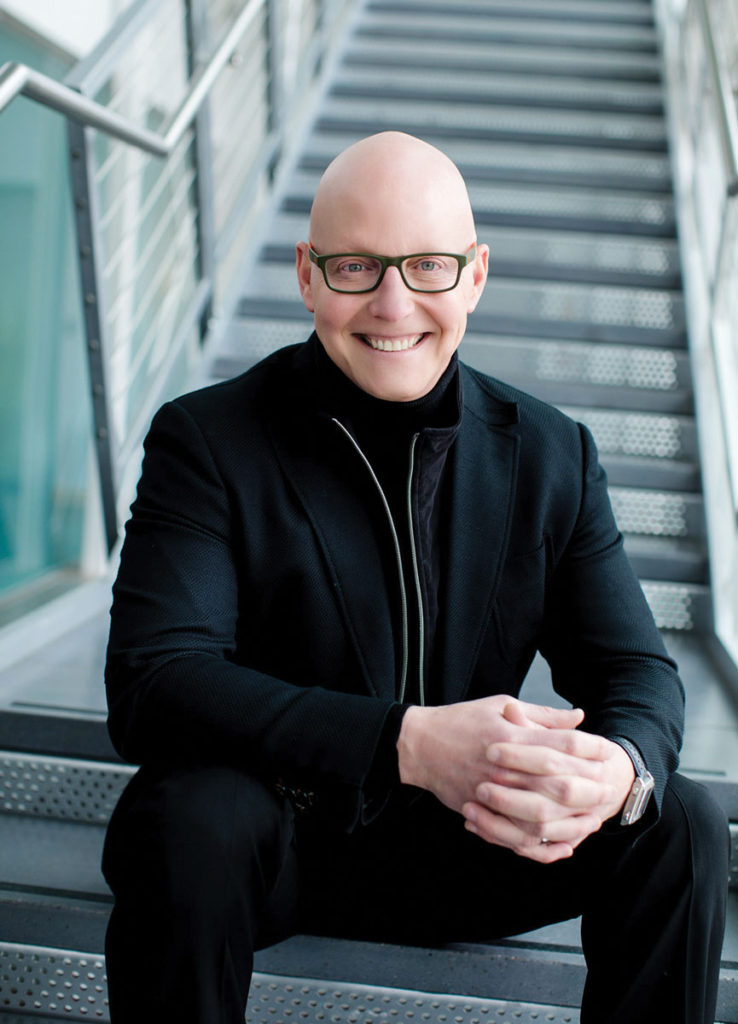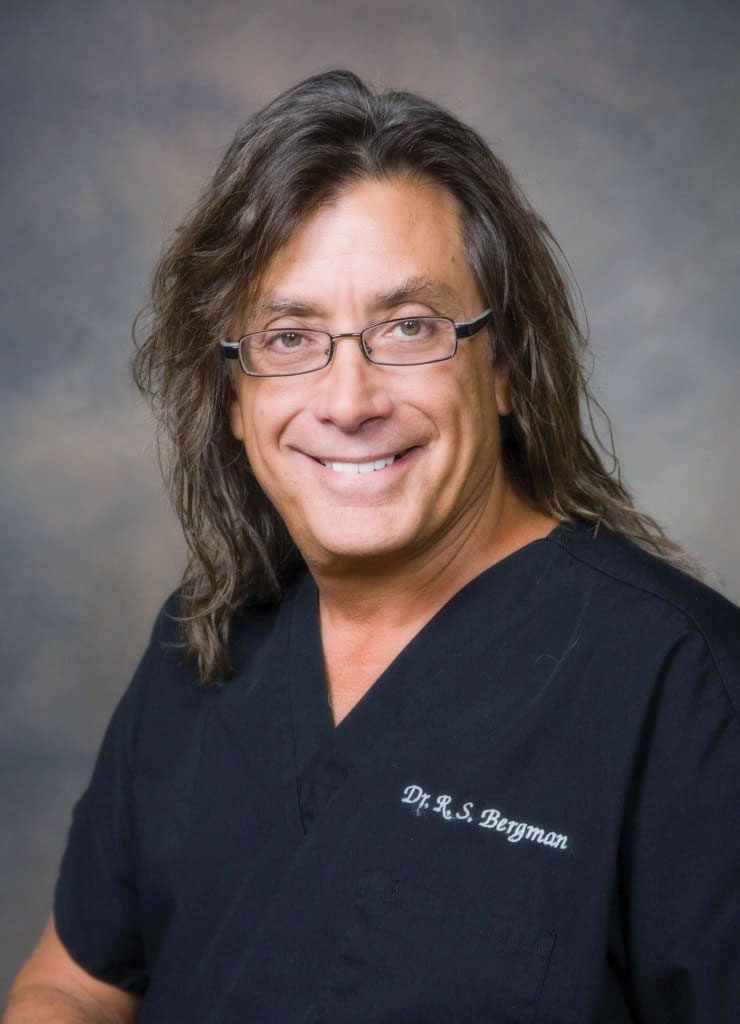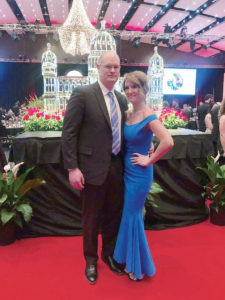Under the knife
6/5/2019Learn the questions to ask about elective plastic surgery before you decide if it is right for you.

The face of plastic surgery has become younger, more familiar and more masculine.
Procedures aren’t only for models or the rich and famous. It’s everyday people,
moms and even businessmen who are now under the knife.
“There’s definitely a trend toward younger people,” says Dr. Brent Koch, who has
performed facial plastic and reconstructive surgery for 20 years in the Des Moines
area. “The average age for facelifts and eyelid surgeries has steadily gone down. There’s a trend toward people doing things at a younger age but less aggressive surgery.
“In fact, you’ve probably talked to three or four people today who have had plastic surgery or lip filler or Botox and look great,” he says.
About one in five plastic surgery patients are men. As men stay in the workforce longer and work alongside younger coworkers, they want to keep their appearance as such, Koch says.
“There’s no ageism or sexism in wanting to look nice,” he says.

A recent report from the American Society of Plastic Surgeons showed that more Americans are having surgical and minimally invasive cosmetic procedures done and are spending more money for them.
More than 17.7 million procedures at a cost of more than $16.5 billion were done in 2018, according to ASPS, which represents more than 93 percent (more than 8,000 people) of all board certified plastic surgeons in the United States. This is almost 250,000 more procedures than were done in 2017 and a 4 percent increase in cost. The overall number of cosmetic procedures has steadily risen in the past five years.
ASPS’s statistics show a new trend in bodyshaping procedures, especially non-invasive fat reduction, breast augmentation and liposuction surgeries.
Dr. Ronald Bergman, a plastic and reconstructive surgeon for almost 40 years, says the plastic surgery patient population is getting younger and more masculine because people want to look younger for longer.
“We sell youth,” he says. “When you watch TV and you watch our culture, it’s becoming more common for the younger people to do it.”
Smaller, maintenance procedures become popular
The days of “Extreme Makeover” in which an individual would undergo an 8-hour surgery are gone. Now, individuals have a smaller procedure such as an upper eyelid lift or a tuck up along their jaw line, which are less aggressive and less noticeable, Koch says.

reconstructive surgeon for almost 40 years. He says the
plastic surgery patient population is getting younger and
more masculine.
“When you wait until an older age and you have a lot done, that’s a very big change to the people around you,” he says.
Smaller procedures are easier to recover, especially when performed at younger ages. They also require shorter incisions, which means the patient can often go home right away, Koch says. Most aspects are completed under the skin with little scarring. Those who have a mini facelift can be back to working out, taking hot yoga class, running or lifting weights within a week.
Some patients will still bruise for a few weeks afterward depending upon the procedure, and the incision itself can take weeks or months to heal. Each surgery is different, he says.
Koch says “maintenance” procedures such as injectable fillers are even more common at a younger age. Individuals are having this done to maintain the thickness of their skin and to fend off wrinkles. Ninety percent of Koch’s surgeries are elective, meaning the patient has made the decision to change something with his or her appearance.
The use of Botox, a cosmetic drug form of botulinum toxin that temporarily paralyzes facial muscles to eliminate wrinkles, has increased exponentially in the 20 years Koch has performed facial surgeries.
“It’s become a regular thing to make sure the frown creases and the eye wrinkles stay smooth,” he says.
It’s also popular because it’s temporary. A Botox injection lasts about three months. National statistics from ASPS show that 7.44 million botulinum toxin type A procedures were completed in 2018.
Koch says injectable fillers have improved. They now have numbing medications built into them, produce a smoother result, and last longer. Topical skincare products also have improved and are more effective at keeping away brown spots and smoothing skin.
One woman’s, “Why?”

Anne Guy with her family at Walt Disney World in Florida before her breast augmentation and lift surgery.
Anne Guy, 37, of Clive, had breast augmentation with a lift in 2015.
“My breasts had deflated so badly after having three kids,” she says of her choice to have surgery. “I felt like I had the breasts of a 70-year-old woman.”
Guy had considered surgery for about a year before she consulted with a surgeon. She had lost about 35 pounds and nursed her youngest child for two years, which she says wreaked havoc on her body.
After she talked to her husband, John, she spoke with friends and others who had similar surgeries and learned it was a lot more common than she thought.
“You start talking about it to your close friends and they say: ‘I know someone who had it done,’” Guy says. “I think it’s becoming much more common, and it’s awesome. Why should it be so taboo? I know people who have had them done because they’ve known others who have.”
Do research, ask questions
Surgeons and those who have had plastic surgery say the most important thing a prospective patient can do is conduct research and ask questions. The ASPS website, www.plasticsurgery.org, also has information about various procedures, costs, before and after photos, risks, prospective candidates, recovery expectations, questions to ask surgeons, where to find a board certified surgeon and more.
Guy researched various plastic surgeons in the area. She visited their websites, viewed before and after photos, found individuals who had her body type to compare their results, talked to individuals who had used different surgeons and asked for recommendations.
Ultimately, she scheduled a consultation with Dr. David Robbins at Des Moines Plastic Surgery.
Guy was happy with the way Robbins answered her questions. She asked about his experience and frequency of performing augmentation and lift surgery, typical side effects, recovery time, what to expect from the anesthesia, and when she could lift her kids and return to work.
“It’s important to have a provider who will give you what to expect,” she says.
When she was researching, Guy found only a $500 difference between surgeons. She paid $8,000 for her surgery.
“For me, if I needed to switch surgeons due to cost, it was not the time to get them,” she says. “This may only be a once in a lifetime thing. You don’t want to have to go back because a surgeon charged less and botched something.”
According to ASPS, the average cost of a breast augmentation in 2018 was $3,824. This does not include the lift component of a surgery. The ASPS reports that augmentation surgery costs can widely vary and that the average fee does not include the type of implants used, anesthesia, operating room facilities or other related expenses. The organization also says a surgeon’s fee will be based upon his or her experience, the type of procedure and the geographic location of the office.
Questions are so important to Koch, the facial plastic surgeon, that he wrote a book that he gives to anyone who comes in for a consultation. He suggests
prospective patients receive two or three opinions from different surgeons, ask to see before and after photos, ask about the surgeon’s frequency of performing the
surgery and talk to past patients. He says a person’s general practitioner and other medical professionals can also advise on a surgeon’s abilities and reputation.
“Don’t bargain shop with your face. You only get one,” Koch says. “Really do your research.”
Bergman also cautions patients in their selection of a surgeon. He says that “board-certified” isn’t always a guarantee. He suggests patients consider how they feel when they meet the surgeon and talk to others who have had work done by the surgeon for recommendations.
A surgeon’s experience also is important, Bergman says. About 25 percent of his surgeries are reconstruction of faces, burn reconstruction, hand surgery or trauma surgeries such as limb re-attachment.
Surgeons also recommend prospective patients inquire about and know the risks associated with any surgery.
On the cosmetic side, in addition to breast reductions, reconstructions, augmentations and lifts, Bergman is also involved with removing implants for those who have breast implant illness. He first performed the surgery about 30 years ago and says his experience with breast implants has helped recognize
the symptoms.
A small percentage of implant patients will have an autoimmune response to a silicone implant that ranges from mild to a deathly illness. Bergman is working with others to get a test developed for women before they have implant surgery to see if they are prone to develop the illness.
Be honest
Robbins talked with Guy about her reasons for surgery and her expected outcome.
Guy wanted to feel comfortable in her own skin and have her clothes fit better.
“I am much more comfortable in my own clothes now,” she says. “It’s definitely boosted my confidence.”
Robbins presented her with a book of before and after photos, took measurements of her body to determine the perfect fit for her implants, and explained different types of implants and what she could expect.
“He really wanted to make sure it was proportionate to my body,” Guy says.
Guy had a specific look in mind, shared that with Robbins and selected her implants based on that and his recommendations. He took pictures of her and then used a digital imaging machine to give her an idea of what she would look like after surgery.
“It was remarkable,” she says.
Koch says the ideal plastic surgery patient has a specific thing he or she wants to change or improve.
“They’ve thought about it a long time, and they have a reasonable understanding of the healing process,” he says. “One needs to be realistic about the healing process and the outcomes.”
Koch and Bergman also have talked people out of surgery.
“Some people want something done that they don’t need, and perhaps the problem is not physical,” he says. “Perhaps it’s frustration from an event in their life or a bad time when they’re not feeling great about themselves. It’s not right to do something.”
Bergman says he can weed out the individuals who don’t need plastic surgery from the ones who truly do.
“I will turn people away if they have an expectation they’re going to look like Kim Kardashian,” he says. “They have to have a realistic expectation of exactly what I can do.”
Recovery takes time
Six months after her consultation with Robbins, Guy was on the operating table.
Post-surgery, she stayed on top of her pain medication and admits she remembers little from the first few days after her surgery.
“I remember taking a shower for the first time and unwrapping myself. I was like: ‘Oh my God. What did I do?’ ” she recalls.
Guy’s body was swollen and her breasts looked squared off and up to her collar bones. She had to remind herself that it takes time for everything to settle and for the swelling to go down. The only complication she had was an allergic reaction to the Steri-Strips that were used, which caused a rash that blistered.
Overall, she says the procedure was much less painful than she had thought it would be. Post-surgery, once she was more mobile, Guy had moments when her breasts seemed to “squeak,” which caused her some worry. She referred to the website www.realself.com when she wanted to know if what she was experiencing was common. She learned there can be air pockets from surgery that release, so the noise she heard was normal.
It took about a month for Guy to completely heal. She went from a 34AA cup size to a 34DD, which was comparable to her size before she had children. Guy says she’s very happy with her results. She was able to resume working out within a month with no restrictions. Guy says doing pushups or chest-related exercises are different after implants because her muscles pull the silicone implant and give her chest an unnatural look, which is something she says active exercisers may want to consider before surgery. She also suggests individuals who are undergoing surgery have others available to help them, especially anyone who has children.
Digital imaging will help give patients a reasonable expectation within about a 90 percent degree of accuracy for the final product, Koch says, but plastic surgery is not an exact science.
“It’s not ‘You do this, and this will be the outcome,’ ” he explains. “Everyone heals differently. Some bruise; some don’t. Some bleed; some don’t. Some heal fast, and some don’t.”
The patient also has to be healthy. For example, Koch says he won’t perform a facelift on an individual who smokes because it’ll compromise their healing process. ♦
Questions to ask your surgeon
❍What is your board certification?
❍What is your most recent experience performing this procedure? How many do you perform a year?
❍May I see recent before and after photographs of past patients’ results?
❍Have you ever been sued for malpractice?
❍In the event of an emergency, what is the crisis plan?
❍Who can I call or email with questions in your office?
❍Will insurance cover any of the costs associated with my plastic surgery?
❍What are my payment options?
❍Is there a charge for a consultation?
❍What happens in a consultation? Who will my consultation be with?
❍If I need a touch-up procedure or revision, who pays for it?
❍How do you know I’m a candidate for the procedure I’m requesting? What are my alternatives?
❍Can I show you pictures of what I want?
❍How realistic is digital imaging?
❍What steps do I need to take to ensure I’m in the best health and cleared for surgery?
❍On the day of my surgery, who will evaluate me?
❍Who will administer my anesthesia? What are the risks associated with anesthesia?
❍Will someone monitor me throughout my procedure? If so, who?
❍Am I going to feel a lot of pain when I wake up?
❍What should I expect for healing time, and when can I return to work?
❍Will I need a driver and someone to stay with me? For how long?
❍Are there restrictions during my recovery? For how long?
❍When will I see my surgeon again after surgery?
❍Do people ever regret their decision during the early healing stages?
❍Are you available to meet with me at nighttime or during weekends if I have concerns?
❍How long can I expect results to last? How can I maintain them?
❍Will weight loss or gain affect my results?
❍What are my options if I’m not happy with my results?
Questions to ask yourself
❍Do I really need this?
❍What is my primary motivation? What are my secondary motivations?
❍Am I honestly prepared to follow my surgeon’s orders and make changes before and after surgery?
❍What are my expectations? How will I deal with an outcome that doesn’t match them?
❍How will this procedure affect my self-esteem?
❍Are my family and friends supportive?
❍Is the timing right in regards to family obligations, work and finances?
❍Is the surgeon someone I feel comfortable with?
❍Does the expected outcome outweigh the potential risks?
Information from Dr. Brent Koch’s book: “50 Questions You MUST Ask Before You Have Plastic Surgery” ♦
 How much does it cost?
How much does it cost?
Least expensive surgical procedures:
Breast augmentation (313,735 procedures): Average surgeon fee of $3,824
Tummy tuck
(130,081 procedures): Average surgeon fee of $6,253
Liposuction
(258,558 procedures): Average surgeon fee of $3,518
Most expensive surgical procedures:
Facelift (121,531 procedures): Average surgeon fee of $7,655
Breast reduction (43,591 procedures): Average surgeon fee of $5,680
Eyelid surgery (206,529 procedures): Average surgeon fee of $3,156
Most-performed minimally invasive cosmetic procedures:
Chemical peel (1.4 million procedures): Average surgeon fee of $669
Wrinkle treatment injections (7.4 million procedures): Average surgeon fee of $397
Laser hair removal (1.1 million procedures): Average surgeon fee of $285
Source: 2018 data from the American Society of Plastic Surgeons. Average fees do not include anesthesia, operating room facilities or other related expenses.





















